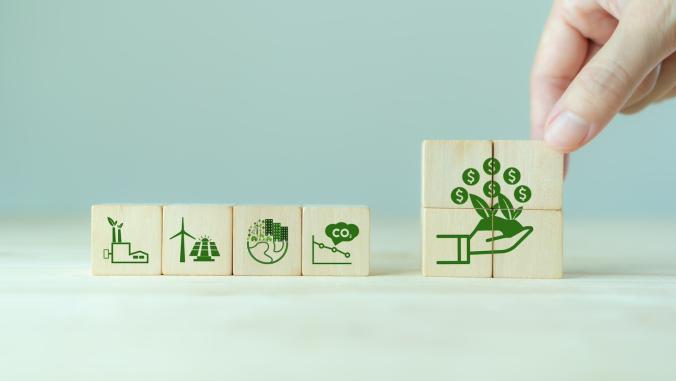Hot topic: It takes more than clean power to reach renewables targets
Cargill, General Motors, Kimberly-Clark, Mars and P&G throw their weight behind an effort to take stock of thermal loads.

The corporate world has done an admirable job of inspiring the addition of solar and wind electricity to the worldwide grid — more than 8 gigawatts of capacity in the past five years alone has been inspired or influenced by their demand, according to figures from the Business Renewables Center.
But the cold, hard truth is that if companies focus on addressing electricity alone — without considering how they fuel heating and cooling functions across factories or campuses — many are likely to fall short of their "renewable energy" aspirations.
In the manufacturing sector alone, the energy used for these processes — everything from running boilers to process food to sterilizing and cleaning equipment — accounts for at least one-third of all consumption, according to data from the U.S. Environmental Protection Agency. Other figures peg the percentage at close to 50 percent.
"Thermal demand in factories and buildings comprise such a large percentage of energy and fossil fuel use, and as a result it will be impossible to achieve long-term climate and energy goals without dramatically increasing the use of renewable heating and cooling," said David Gardiner, president of advisory firm David Gardiner and Associates.
Enter the Renewable Thermal Collaborative, a new initiative announced this week by the Renewable Energy Buyers Alliance. The effort was founded by five manufacturing giants — Cargill, General Motors, Kimberly-Clark, Mars and P&G — and the city of Philadelphia. It will be facilitated under the REBA umbrella by World Wildlife Fund (WWF), the Center for Climate and Energy Solutions and David Gardiner and Associates.
One issue that will warrant close scrutiny is how to account for — and report on — the carbon lifecycle impacts of these sorts of energy.
"Because thermal energy is a significant portion of what’s required to manufacture our products, we view the Renewable Thermal Collaborative (RTC) as an important and strategic way to work together to help identify technology which delivers cost-effective and environmentally responsible solutions for a low carbon future," said Stewart Van Horn, director of global sustainability and energy solutions at Kimberly-Clark, in a statement.
The issue is also looming larger for U.S. cities that have set 100 percent renewable energy targets, because many use coal and natural gas to run the heating and cooling systems of municipal buildings, said Bryn Baker, manager of the renewable energy program at WWF.
That's one reason why Philadelphia has jumped into the alliance, and why Baker expects the effort to attract others. "One of the first goals for this group is how we find renewable alternatives for these needs," she said during a briefing about the new program.
Some renewable thermal options explored by the new working group include biomass, biogas, geothermal, landfill gas and solar thermal. GM, which last year set a 100 percent renewables goal by 2050, has been using landfill gas (PDF) at its operations since 1993. According to a corporate fact sheet, it accounts for 43 percent of the energy consumed the automaker's assembly plant in Fort Wayne, Indiana, and 66 percent of the energy used at a sister facility in Orion, Michigan.It will be impossible to achieve long-term climate and energy goals without dramatically increasing the use of renewable heating and cooling.
One issue that will warrant close scrutiny is how to account for — and report on — the carbon lifecycle impacts of these sorts of energy. Just because an option is more renewable than fossil-fuel options such as coal or natural gas doesn't mean it's as "clean" as solar or wind power.
Existing mechanisms, such as renewable energy credits, originally weren't developed to cover such options. And that presents a challenge for corporate buyers, one thing that the steering committee will address first.
"There is nothing that really addresses this on the thermal side. You can't say you 'caused' something," Baker said.





